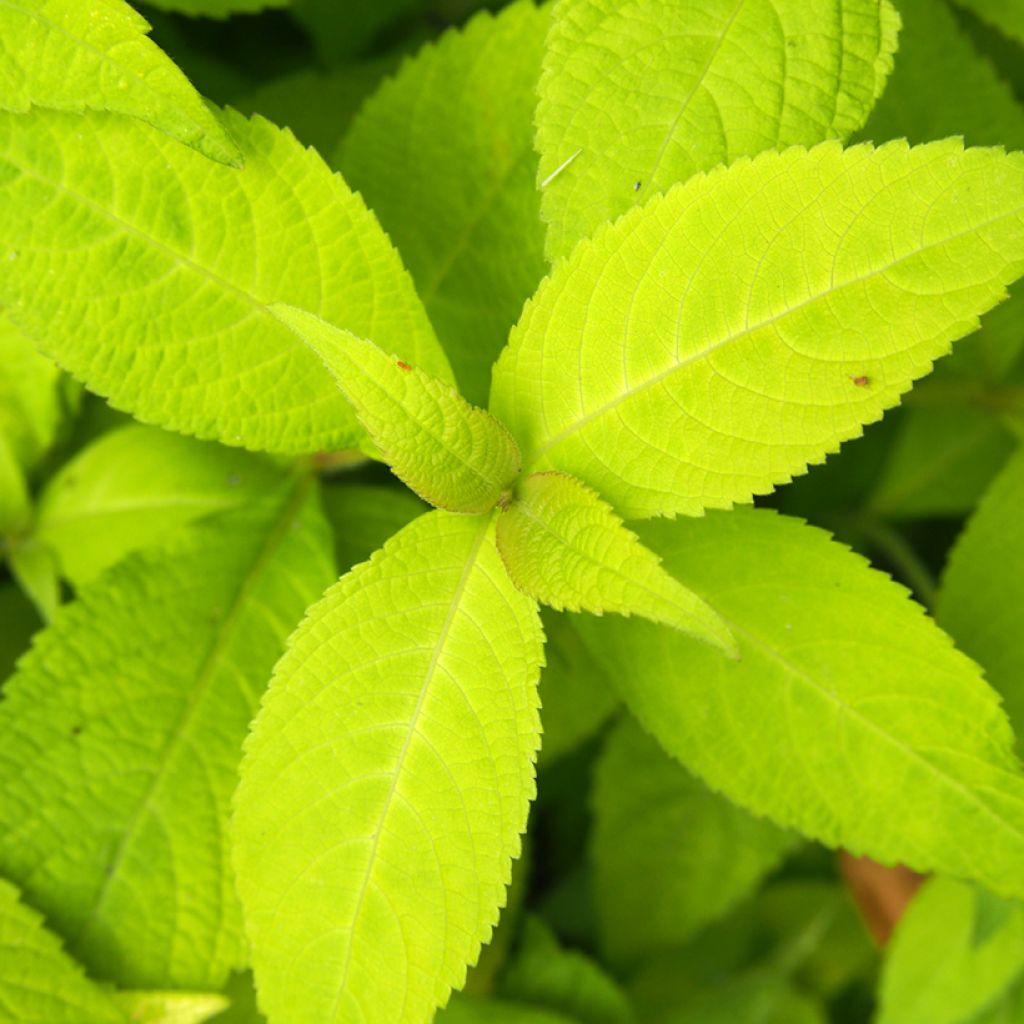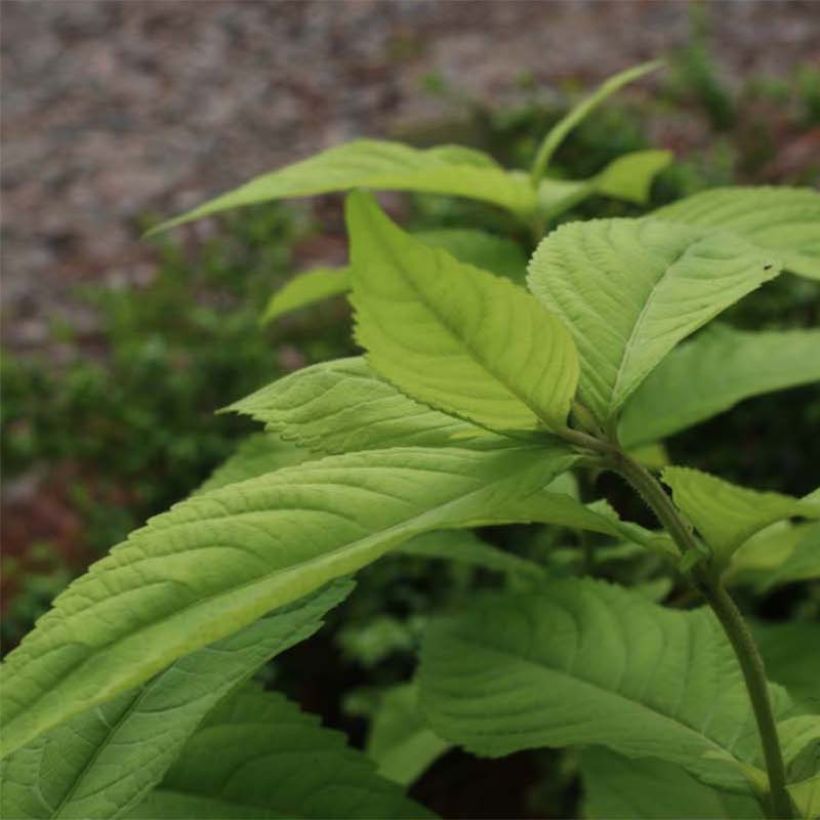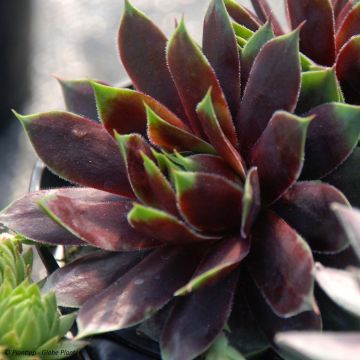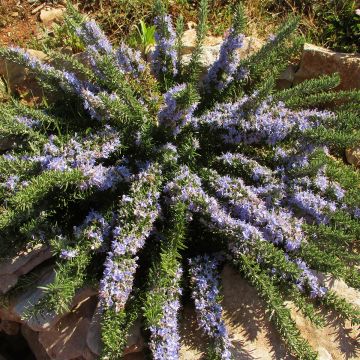

Leucosceptrum japonicum Golden Angel


Leucosceptrum japonicum Golden Angel


Leucosceptrum japonicum Golden Angel


Leucosceptrum japonicum Golden Angel
Leucosceptrum japonicum Golden Angel
Leucosceptrum japonicum Golden Angel
Japanese Bush Mint
Having arrived in the state of barely visible buds on the surface, replanted as soon as it arrived 6 days ago, I have no idea whether it will recover or not, and if that was the right thing to do...
Christiane, 28/03/2022
Special offer!
Receive a €20 voucher for any order over €90 (excluding delivery costs, credit notes, and plastic-free options)!
1- Add your favorite plants to your cart.
2- Once you have reached €90, confirm your order (you can even choose the delivery date!).
3- As soon as your order is shipped, you will receive an email containing your voucher code, valid for 3 months (90 days).
Your voucher is unique and can only be used once, for any order with a minimum value of €20, excluding delivery costs.
Can be combined with other current offers, non-divisible and non-refundable.
Home or relay delivery (depending on size and destination)
Schedule delivery date,
and select date in basket
This plant carries a 12 months recovery warranty
More information
We guarantee the quality of our plants for a full growing cycle, and will replace at our expense any plant that fails to recover under normal climatic and planting conditions.
Would this plant suit my garden?
Set up your Plantfit profile →
Description
Leucosceptrum japonicum 'Golden Angel', also known as the Japanese bush mint, is neither a mint nor a bush, but a beautiful perennial plant from the Lamiaceae family. In the cool shade of woodland, it forms a regular, dense clump with stems that bear abundant foliage, which is golden in spring and later turns chartreuse green. Its discreet flowering takes place in autumn, in the form of upright white to pale-yellow inflorescences. It is a hardy plant that thrives in shade. Planted in cool, well-drained soil, it becomes more beautiful and lush year after year.
Leucosceptrum japonicum is a cousin of mints, with which it shares square-shaped stems. It is native to the mountainous forest areas of Honshu, Japan. It is an herbaceous and rhizomatous plant that forms a clump of leafy stems reaching 60cm (24in) in height and slowly spreads laterally, up to 1.5m (5ft) in diameter. The large leaves are arranged opposite each other on the stems. They are oblong-lanceolate, measuring 10 to 20cm (4 to 8in) in length and 3 to 8cm (1 to 3in) in width, with toothed edges. In this variety, the dense and regular foliage is a beautiful golden yellow at the beginning of the season, gradually turning light green. The flowering occurs in October, at the tip of each stem, in the form of upright spikes composed of tiny flowers that are whitish-yellow with prominent stamens.
Despite its common name, it is not edible!
Leucosceptrum japonicum is a beautiful plant for cool shade that is still not widely cultivated in our gardens, despite its many qualities. This lovely perennial naturally pairs well with Keiskea japonica, Isodon longituba, painted ferns, and Farfugium japonicum, all plants that add charm to the woods in the land of the rising sun. Its golden foliage particularly complements the blue flowers of forget-me-nots, brunnera, corydalis, the variegated foliage of hostas, and the beautiful yellow daisies of ligularias like Ligularia 'Desdemona'.
Report an error about the product description
Leucosceptrum japonicum Golden Angel in pictures


Flowering
Foliage
Plant habit
Botanical data
Leucosceptrum
japonicum
Golden Angel
Lamiaceae
Japanese Bush Mint
Southeast Asia
Other Perennials A to Z
View all →Planting and care
Plant in spring or autumn. It prefers rich and humus-bearing soil, but is quite tolerant: any good garden soil that is not too compact and without excessive limestone, retaining moisture in summer, will suit it. Choose a position in partial shade, morning sun, or light shade. It withstands our normal winters perfectly. Adding compost at the base of the plant in spring will be appreciated. Water regularly during the first year to help the plant establish itself, and in case of abnormally dry summers. Young spring shoots may be destroyed by late frosts, but it is without consequences.
Planting period
Intended location
Care
Planting & care advice
-
, onOrder confirmed
Reply from on Promesse de fleurs
Similar products
Haven't found what you were looking for?
Hardiness is the lowest winter temperature a plant can endure without suffering serious damage or even dying. However, hardiness is affected by location (a sheltered area, such as a patio), protection (winter cover) and soil type (hardiness is improved by well-drained soil).

Photo Sharing Terms & Conditions
In order to encourage gardeners to interact and share their experiences, Promesse de fleurs offers various media enabling content to be uploaded onto its Site - in particular via the ‘Photo sharing’ module.
The User agrees to refrain from:
- Posting any content that is illegal, prejudicial, insulting, racist, inciteful to hatred, revisionist, contrary to public decency, that infringes on privacy or on the privacy rights of third parties, in particular the publicity rights of persons and goods, intellectual property rights, or the right to privacy.
- Submitting content on behalf of a third party;
- Impersonate the identity of a third party and/or publish any personal information about a third party;
In general, the User undertakes to refrain from any unethical behaviour.
All Content (in particular text, comments, files, images, photos, videos, creative works, etc.), which may be subject to property or intellectual property rights, image or other private rights, shall remain the property of the User, subject to the limited rights granted by the terms of the licence granted by Promesse de fleurs as stated below. Users are at liberty to publish or not to publish such Content on the Site, notably via the ‘Photo Sharing’ facility, and accept that this Content shall be made public and freely accessible, notably on the Internet.
Users further acknowledge, undertake to have ,and guarantee that they hold all necessary rights and permissions to publish such material on the Site, in particular with regard to the legislation in force pertaining to any privacy, property, intellectual property, image, or contractual rights, or rights of any other nature. By publishing such Content on the Site, Users acknowledge accepting full liability as publishers of the Content within the meaning of the law, and grant Promesse de fleurs, free of charge, an inclusive, worldwide licence for the said Content for the entire duration of its publication, including all reproduction, representation, up/downloading, displaying, performing, transmission, and storage rights.
Users also grant permission for their name to be linked to the Content and accept that this link may not always be made available.
By engaging in posting material, Users consent to their Content becoming automatically accessible on the Internet, in particular on other sites and/or blogs and/or web pages of the Promesse de fleurs site, including in particular social pages and the Promesse de fleurs catalogue.
Users may secure the removal of entrusted content free of charge by issuing a simple request via our contact form.
The flowering period indicated on our website applies to countries and regions located in USDA zone 8 (France, the United Kingdom, Ireland, the Netherlands, etc.)
It will vary according to where you live:
- In zones 9 to 10 (Italy, Spain, Greece, etc.), flowering will occur about 2 to 4 weeks earlier.
- In zones 6 to 7 (Germany, Poland, Slovenia, and lower mountainous regions), flowering will be delayed by 2 to 3 weeks.
- In zone 5 (Central Europe, Scandinavia), blooming will be delayed by 3 to 5 weeks.
In temperate climates, pruning of spring-flowering shrubs (forsythia, spireas, etc.) should be done just after flowering.
Pruning of summer-flowering shrubs (Indian Lilac, Perovskia, etc.) can be done in winter or spring.
In cold regions as well as with frost-sensitive plants, avoid pruning too early when severe frosts may still occur.
The planting period indicated on our website applies to countries and regions located in USDA zone 8 (France, United Kingdom, Ireland, Netherlands).
It will vary according to where you live:
- In Mediterranean zones (Marseille, Madrid, Milan, etc.), autumn and winter are the best planting periods.
- In continental zones (Strasbourg, Munich, Vienna, etc.), delay planting by 2 to 3 weeks in spring and bring it forward by 2 to 4 weeks in autumn.
- In mountainous regions (the Alps, Pyrenees, Carpathians, etc.), it is best to plant in late spring (May-June) or late summer (August-September).
The harvesting period indicated on our website applies to countries and regions in USDA zone 8 (France, England, Ireland, the Netherlands).
In colder areas (Scandinavia, Poland, Austria...) fruit and vegetable harvests are likely to be delayed by 3-4 weeks.
In warmer areas (Italy, Spain, Greece, etc.), harvesting will probably take place earlier, depending on weather conditions.
The sowing periods indicated on our website apply to countries and regions within USDA Zone 8 (France, UK, Ireland, Netherlands).
In colder areas (Scandinavia, Poland, Austria...), delay any outdoor sowing by 3-4 weeks, or sow under glass.
In warmer climes (Italy, Spain, Greece, etc.), bring outdoor sowing forward by a few weeks.



























































